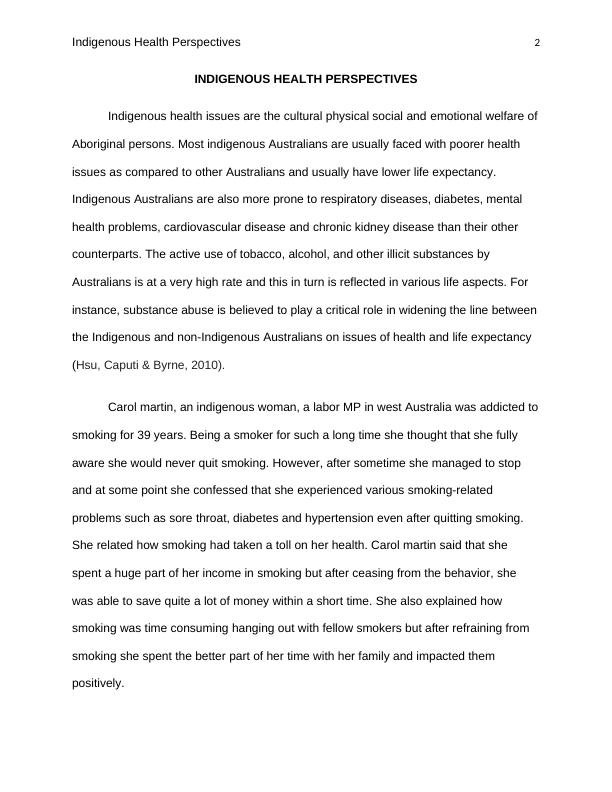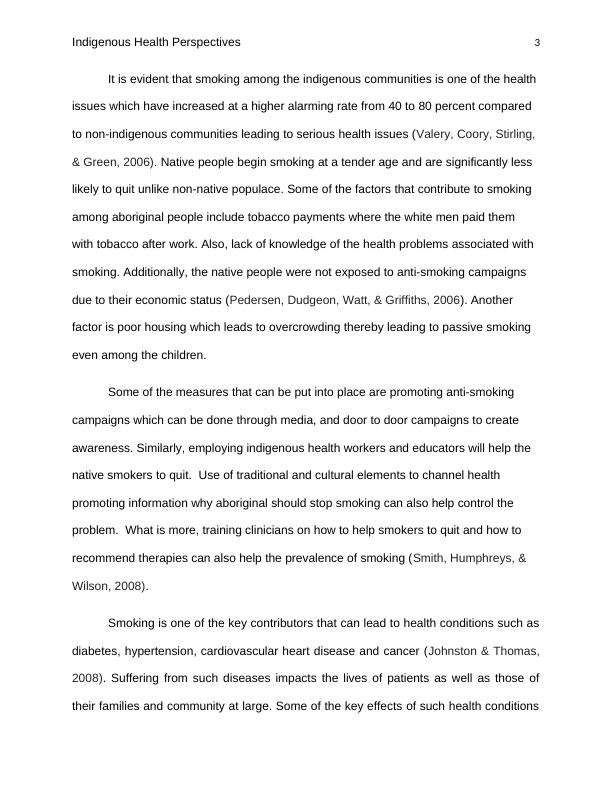Indigenous Health Perspectives
Write a narrative of the health journey of an Indigenous person from the public domain, reflecting on the impact of health issues on the individual, family, and community.
7 Pages1184 Words415 Views
Added on 2023-04-07
About This Document
This document discusses the cultural, physical, social, and emotional welfare of Aboriginal persons in relation to their health. It explores the health issues faced by indigenous Australians, such as respiratory diseases, diabetes, mental health problems, cardiovascular disease, and chronic kidney disease. The document also highlights the impact of smoking on indigenous communities and suggests measures to address this issue.
Indigenous Health Perspectives
Write a narrative of the health journey of an Indigenous person from the public domain, reflecting on the impact of health issues on the individual, family, and community.
Added on 2023-04-07
ShareRelated Documents
End of preview
Want to access all the pages? Upload your documents or become a member.
Health Promotion in Public Health Assignment
|2
|723
|89
Global Perspective of Healthcare - PDF
|15
|4498
|75
Indigenous Education and Perspectives
|6
|1418
|246
ABORIGINES AND TORRES STRAIT ISLANDER ARTICLE 2022
|14
|3510
|41
Health Journey of an Indigenous Person
|6
|1484
|372



